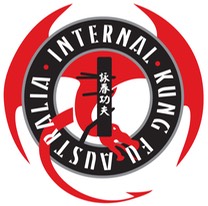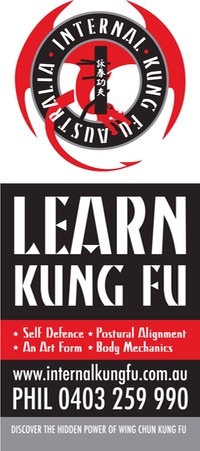This brief article is to help students with their Wooden Dummy Training. In this article I will go through what the Kuen Kuit says about the Wooden Dummy, and add my slant on what it means:
"There are 108 movements for the Wooden Man; repeated practice brings proper use of power"
I think this one is self-explanatory. You need to train. You need to practice. It is not enough to learn the form; you need to spend time each day practicing. It says it will bring the "proper use of power”. I believe this has a special meaning.
Obviously the Wooden Dummy is made of wood. It is tough, and you cannot overpower it with muscle. You need to adhere to the set techniques to move around it. You stick to it, and use your legs and arms together to “defeat” it. This is somewhat similar to a person much stronger than yourself. You cannot use your muscle to overpower them, just like you cannot defeat the arm of the Wooden Man. So the shapes from the forms, used in the correct way shows you how to properly use power. It is hard to describe, however repeated practice does bring about results as long as you understand not to use force against the arms.
I believe when hitting the trunk of the Dummy, the Dummy’s Centreline, it also helps develop the correct use of power. If you always hit the dummy with the force of your bodyweight, even only gently, then you are practicing to strike with your bodyweight all the time. Repeat, and this will all become natural.
"Steps vary and always maintain close contact with the Wooden Man.”
I believe this means that there are sets of different techniques, but no matter what, always have close contact with it. For example, when doing the Double Gan Sau movements, or Kwan Sau, do not have large movements that start away from the Dummy. Start each move always in close contact, no sweeping movements. Similarly, no large pivots, only small tight pivoting. This is similar to Chi Sau, where large movements will allow gaps to form.
"Power starts from the heart and shoots towards the centerline of the Mok Yan Jong”
In China a long time ago, it was believed that your mind was in the heart area. I believe this saying has a few meanings. One is from our Chu Shong Tin Lineage, where power starts from the mind. Another meaning is that power starts from the body, it is essential to learn how to use your body mass in Wing Chun, which makes it possible to overcome larger opponents. A third meaning is that just about every move in Wing Chun starts from the middle of the chest (They thought the heart was in the middle of the chest), or from the centreline. ie. the middle is where the heart is.
The target is the centreline, and this can be practiced on the Wooden Dummy. This is the centre of the two points from your heart to the Dummy, and also the vertical centre of the Dummy itself.
"Up, down, back and forth, the movements are continuous”
The meaning I have appointed to this in my training is that when using the Dummy, you do not stop. There is a beginning, but there is no end. When you get to the last set, you immediately start the new set with no break. Doing this for hours at a time, you can get lost in where you started and you just be in the moment of back forth, up and down… over and over. After hours of practice is where the magic happens, you improve without realising.
You can only practice this way if you already know the form quite well.
"Power improvement cannot be predicted”
To me this means, and has meant, that if you train the Dummy - over and over for hours… or for months/years. You cannot predict or even feel if you are getting better. You cannot judge how much you will get better. However, after a time you will notice it later, probably not in the Dummy, but in Chi Sau. Power improvement will happen, but you might not even know that it is improving - Just keep practicing and do not look for it when training the Dummy - Avoid being powerful against the Dummy - it’s too strong for you anyway.
"The arm bridge sticks to the hands of the Wooden Man while moving; adhesion power when achieved will be a threatening force”
I believe this is similar to Sticking Hands or Chi Sau. Where the benefit of sticking can introduce its own force. I clearly remember in Hong Kong, Sigung Chu showing a cut down, where he brought his hand down to brush another’s away and even in that tiny contact he had this adhesion power - It stuck to the opponent for a split second to increase the power. You can feel this when you move your wrist around the wood in the first section when doing a tan sau and a pivot. If you use this “adhesion power” on a person it increases the force.
"Power can be released in the intended manner; use of the line and position will be proper and hard to defeat”
I think this is a summary of what has been said. If everything is done correctly, as it is in the Dummy, on a person… then the Dummy will have helped your positioning, your line of attack and will make you better at Wing Chun.
I would also like to add, that even though you are moving around the Dummy in practice - If anyone has tried this in free-sparring it is almost impossible to move around someone in the same way. People move and the Dummy does not. Try looking at it in reverse, the Dummy is moving around you - This is one way to look at it. If someone is trying to move around you, use the movements in the Dummy to counter. Another way is that you can be in all three sides (two sides and the middle) of the Dummy on a person without stepping, depending where your arms are and how your bridges are connected - or with slight pivoting and/or stepping. You most likely will not be able to move around a person like you do the Dummy.
When practicing, think to yourself - “What is the purpose. What is the Wooden Dummy trying to teach me?"
Phillip Warburton.
Internal Kung Fu Australia.


